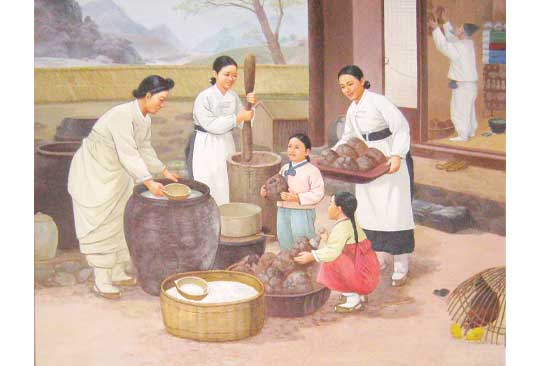The Korean custom of making bean paste with a long history
Bean paste, well-known as a healthy food, is a typical folk food with a long history which characterizes the outstanding wisdom and creativity of and dietary culture peculiar to the Korean nation.
It is recorded in the epitaph of a Koguryo mural tomb that a large number of people were employed for a large-scale construction, consuming lots of polished rice and meat, together with the bean paste of a storehouse.
Every household made bean paste separately, giving rise to different making methods and flavors. As such, the bean paste with peculiar flavor raised the prestige of the households concerned.
In Kaesong, it was said that if a lady wanted to be well married, she should be well trained the dozens of methods to make bean paste, which was good evidence to the diversity of its making methods.
Traditional making method of it is as follows: first, let the ripe soybeans soaked in water for one day at Ripdong (the day when the winter begins) and boil them enough to pound in a mortar; then make soybean balls, 10-15cm in diameter, which is called meju; wrap the soybean balls with rice straw and hang them in an airy place of a certain temperature for 2 or 3 months to be dried with the natural growth of maltase; in March, crumble the parched balls and put in a clean jar; add the salty water of the ratio of 3 to 1; every morning, open the cover of the jar for ventilation and sunning; finally, in 2 or 3 months boil down the black liquid of the jar in a cauldron to get soybean sauce, and mature the remains of the jar to get delicate bean paste.
Like this, making use of soybeans and salt as the main ingredients, Korean people have made soybean sauce, bean paste and hot pepper paste from olden times, and developed them into special fermented foods unique to the nation.
Recently, it was scientifically proved that bean paste was one of the best healthy foods to prevent cancer, and thereby it enjoys worldwide popularity.
The custom of making bean paste is an element registered as the State Intangible Cultural Heritage.
